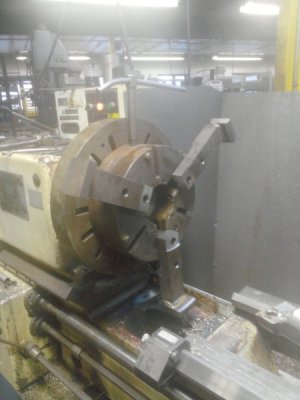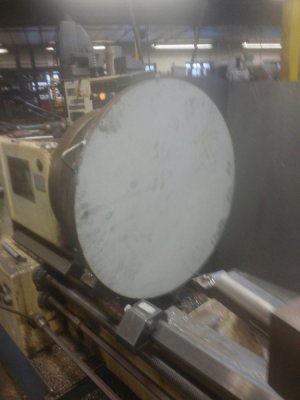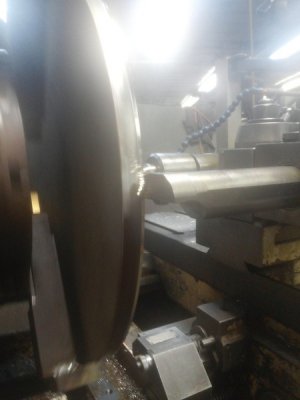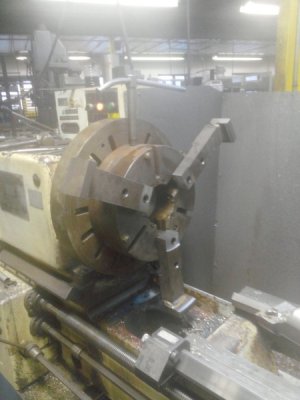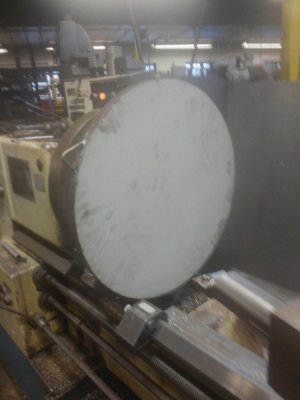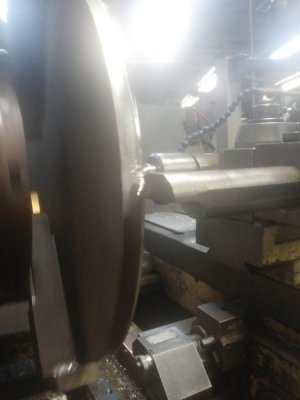- Joined
- Aug 4, 2015
- Messages
- 291
Long version.
The Seat of the pants guy is the one that is more than a simple machinist. He's an engineer of sorts. He's the guy that you show a problem to that needs an electro-mechanical solution to and he ponders it for a while. He scratches out some designs and math on a napkin at lunch and then he builds the solution, from scratch that not only addresses the problem but runs for 40 years with only minimal maintenance.
Short version.
Master Gunsmith.
Master gunsmith is the gunsmith that you take a 100yr old firearm to that they made 10 of, by hand, without plans or drawings and he replaces and repairs the mechanics of it returning it to proper operation. His tools are typically one of one things that anyone else would look at and have no idea what they were even for and probably scrap them. He SEE's the mechanics in operation in his head of how it all works, fits together and the required tolerances for it to be accurate. I know alot of guys speak of accuracy. Consider that we measure angles in degrees. Gunsmiths work in minutes of angle, meaning 1/60 of a degree. To draw that out, its a 1 inch deflection at 300 feet of distance or to really make the point 10 inches in 3000 feet.
I realize that the short version is longer than the long one, but I believe it required the explanation.
But I think the whole point of this is that anyone that can stuff a chunk of metal in a CNC lathe or mill and write 100 lines of G-Code is technically a machinist. He's a bit more than a machine operator but he's still not knowledgeable enough to create a complex machine from scratch.
Now the reasons to have that guy around, the seat of the pants guy, is to fix problems. The hard truth is this, a room full of guys that are experts at running their CNC machines, are still in a sense machine operators. They may be able to product every single part of a mechanical device with their machines, but they don't necessarily have the ability to design those parts, just produce them from a print. The seat of the pants guy can product it, see that the design is wrong on tolerance, correct it, and the part that it mates to. In addition he will see the three other design modifications required to make the machine have a 20 yr life span instead of a 2 yr one that the original design would have created. I guess it's coupled to aptitude. Some folks have a knack for mechanical things, some don't.
The Seat of the pants guy is the one that is more than a simple machinist. He's an engineer of sorts. He's the guy that you show a problem to that needs an electro-mechanical solution to and he ponders it for a while. He scratches out some designs and math on a napkin at lunch and then he builds the solution, from scratch that not only addresses the problem but runs for 40 years with only minimal maintenance.
Short version.
Master Gunsmith.
Master gunsmith is the gunsmith that you take a 100yr old firearm to that they made 10 of, by hand, without plans or drawings and he replaces and repairs the mechanics of it returning it to proper operation. His tools are typically one of one things that anyone else would look at and have no idea what they were even for and probably scrap them. He SEE's the mechanics in operation in his head of how it all works, fits together and the required tolerances for it to be accurate. I know alot of guys speak of accuracy. Consider that we measure angles in degrees. Gunsmiths work in minutes of angle, meaning 1/60 of a degree. To draw that out, its a 1 inch deflection at 300 feet of distance or to really make the point 10 inches in 3000 feet.
I realize that the short version is longer than the long one, but I believe it required the explanation.
But I think the whole point of this is that anyone that can stuff a chunk of metal in a CNC lathe or mill and write 100 lines of G-Code is technically a machinist. He's a bit more than a machine operator but he's still not knowledgeable enough to create a complex machine from scratch.
Now the reasons to have that guy around, the seat of the pants guy, is to fix problems. The hard truth is this, a room full of guys that are experts at running their CNC machines, are still in a sense machine operators. They may be able to product every single part of a mechanical device with their machines, but they don't necessarily have the ability to design those parts, just produce them from a print. The seat of the pants guy can product it, see that the design is wrong on tolerance, correct it, and the part that it mates to. In addition he will see the three other design modifications required to make the machine have a 20 yr life span instead of a 2 yr one that the original design would have created. I guess it's coupled to aptitude. Some folks have a knack for mechanical things, some don't.
Last edited:



